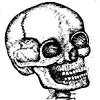3.1: Introduction
- Page ID
- 24129
Theories, Hypotheses, and Error
Science is a dynamic, methodical, approach to acquiring knowledge about the natural world. One element of the scientific method is a hypothesis, which provides a possible explanation for a particular observation. The hypothesis reflects the state of knowledge before the experiment has been performed. A hypothesis does not need to be correct, but it must be testable. A hypothesis has the potential to be falsified if data suggests another explanation for the observations. Some hypotheses are confirmed by numerous experiments conducted by many scientists and these, such as gravity, and a round earth, become theories.
A theory is a coherent set of hypotheses which have been confirmed through repeated experimental tests. Theories are not easily discarded because a great deal of evidence supports them. For example, if you fall off a building you do not have a possibility of floating because "gravity is just a theory". One theory discarded in the face of new evidence was the earth-centered view of the planetary orbits. The earth- centered view held that the sun and planets orbit the earth. This was falsified by the Copernican system which places the sun at the center of planetary orbits.
The scientific method attempts to eliminate two general types of experimental error. Random error occurs due to the imperfection of instruments that measure data. Another source of error in experimentation is bias. A preference, or bias, for a certain outcome. may lead us to unconsciously ignore data that does not fit our hypothesis.
It is important to add proper controls and standards to eliminate bias. All data must be treated equally. Data that does not "fit" may in fact indicate a new and important finding. Scientists present findings in journals and at meetings so that the scientific community can evaluate the merits of the work. It is important that other scientists be able to repeat the experiment and yield the same results.


